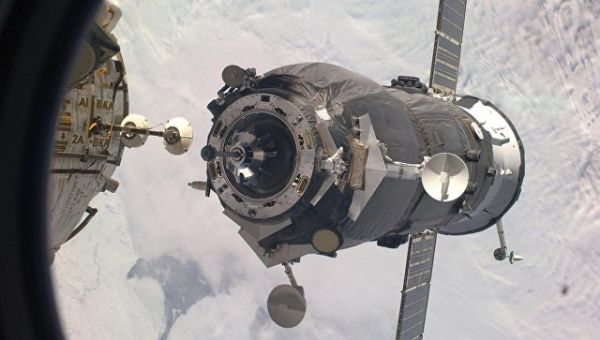This scheme leads to a reduction in fuel consumption, which in the case of the launch of the Progress-MS truck can be used to correct the orbit of the station, said the head of the ballistics department of the corporation Raphael Murtazin
MOSCOW, August 3. /TASS/. The development of a single-turn scheme for the flight of spacecraft to the International Space Station (ISS) does not entail additional costs. This was reported to TASS by the head of the ballistics department of the Rocket and Space Corporation Energia (part of Roscosmos), Rafail Murtazin.
"Working out this scheme against the background of a regular two-day flight of the ship will not require additional fuel costs, this is a purely mathematical distribution of approach maneuvers to obtain the desired trajectory," Murtazin noted.
According to the ballistics expert, the single-turn scheme also leads to a reduction in fuel consumption, which in the future, if the Progress-MS truck is launched, can be used, among other things, to correct the ISS orbit, and in the case of the Soyuz-MS spacecraft, it is reserved for parrying emergency situations.
"If we compare the four-turn scheme with the two-day one, the fuel economy of the ship is 30-35 kg, the two-turn one gives another 15-20 kg. In total, a two-turn compared to a two-day [gives] about 55 kg of fuel economy. A single-turn one will give another 5 kg, " he explained.
In April 2019, RSC Energia developed a single-turn scheme for approaching spacecraft with the ISS, for the first time its elements were tested during the flight of the Progress MS-17 spacecraft. Roscosmos CEO Dmitry Rogozin told reporters that a single-turn flight scheme to the ISS can be tested in 2022.
As the head of the ballistics department of RSC Energia, Rafail Murtazin, told TASS, according to the single-turn scheme, it is assumed that after launching with the help of two pulses, the ship will be in a coelliptic orbit, geometrically similar to the orbit of the ISS. With this approach, when the observation angle of the station from the ship is 23 degrees, the point of execution of the optimal pulse is uniquely determined, which leads the ship to the vicinity of the station after half a turn.

